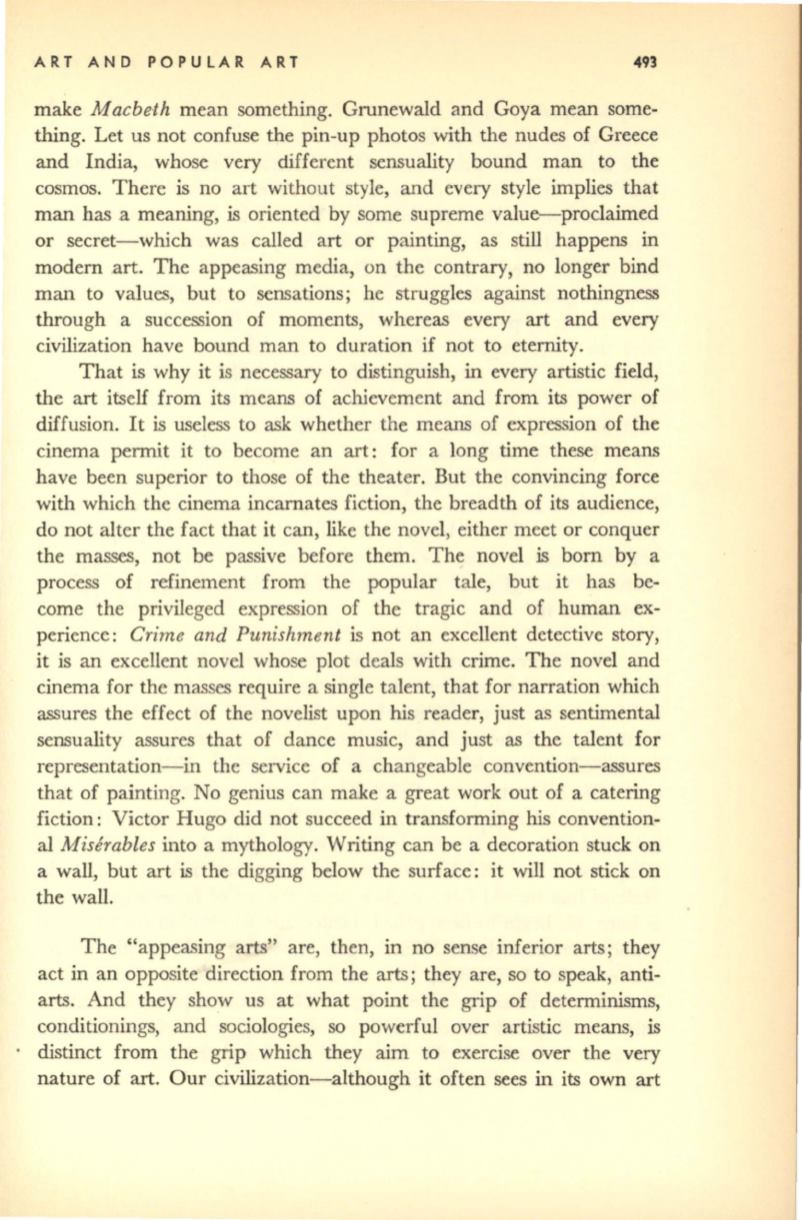
ART AND POPULAR ART
493
make
Macbeth
mean something. Grunewald and Goya mean some–
thing. Let us not confuse the pin-up photos with the nudes of Greece
and India, whose very different sensuality bound man to the
cosmos. There is no art without style, and every style implies that
man has a meaning, is oriented by some supreme value-proclaimed
or secret-which was called art or painting, as still happens in
modern art. The appeasing media, on the contrary, no longer bind
man to values, but to sensations; he struggles against nothingness
through a succession of moments, whereas every art and every
civilization have bound man to duration if not to eternity.
That is why it is necessary to distinguish, in every artistic field,
the
art
itself from its means of achievement and from its power of
diffusion. It is useless to ask whether the means of expression of the
cinema permit it to become an art: for a long time these means
have been superior to those of the theater. But the convincing force
with which the cinema incarnates fiction, the breadth of its audience,
do not alter the fact that it can, like the novel, either meet or conquer
the masses, not be passive before them. The novel is born by a
process of refinement from the popular tale, but it has be–
come the privileged expression of the tragic and of human ex–
perience :
Crime and Punishment
is not an excellent detective story,
it is an excellent novel whose plot deals with crime. The novel and
cinema for the masses require a single talent, that for narration which
assures the effect of the novelist upon his reader, just as sentimental
sensuality assures that of dance music, and just as the talent for
representation-in the service of a changeable convention-assures
that of painting. No genius can make a great work out of a catering
fiction: Victor Hugo did not succeed in transforming his convention–
al
Miserables
into a mythology. Writing can be a decoration stuck on
a wall, but
art
is the digging below the surface : it will not stick on
the wall.
The "appeasing
arts"
are, then, in no sense inferior arts; they
act in an opposite direction from the arts; they are, so to speak, anti–
arts. And they show us at what point the grip of determinisms,
conditionings, and sociologies, so powerful over artistic means, is
distinct from the grip which they aim to exercise over the very
nature of
art.
Our civilization-although it often sees in its own art


